The evolution a family recipe for carnitas, spanning 3 generations, across 3 locations in 2 countries, and a playlist that follows the same trajectory.
story
Evolution of a Family Recipe
This portrait showcases her family’s carnitas recipe, and how that preparation has changed over time and space, across 3 generations and 3 locations (Mexico, where M’s mom grew up eating her own mother’s carnitas, Connecticut, where M grew up eating her mom’s version, and now, Oregon, where she perfected the recipe for her own family’s tastes.
It captures the evolution/expression of the superstitions surrounding the preparation of of the dish, and also includes a playlist of the songs that would accompany both the cooking and eating, along that same timeline and trajectory (from what my friend would call “the Mexican Frank Sinatra”) to the electro cumbia music she now has on while she cooks carnitas.
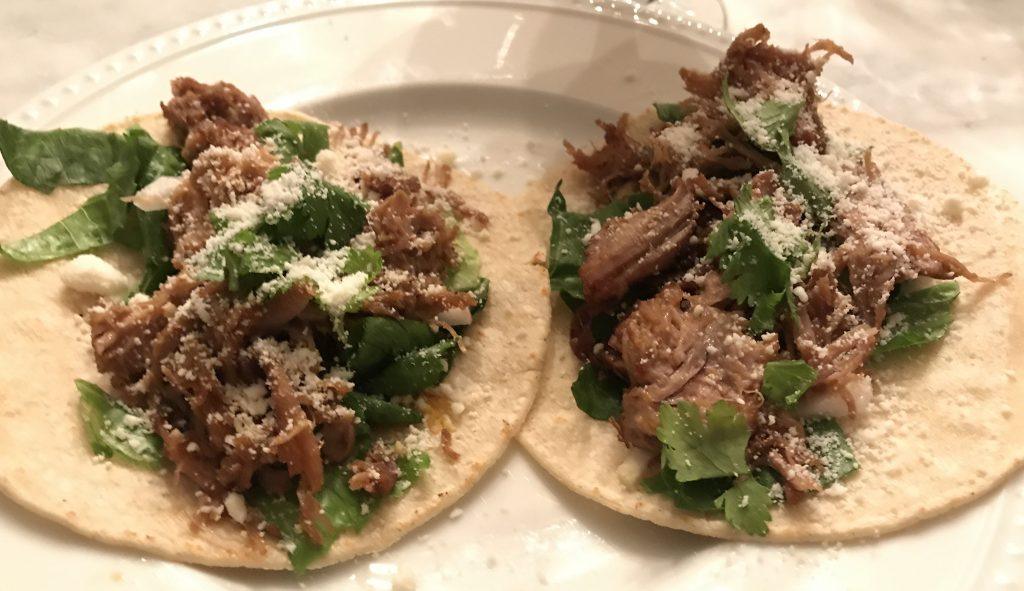
Here’s what M tells us about carnitas, and the story surrounding the preparation:
Carnitas can get a bit time consuming, but my mom has this old Mexican superstition and tradition that all good food takes a bit of patience, love and general happiness while cooking. She says that at the start of any meal, her mother would tell her to make sure that you’ve had a nice strong cup of coffee if you’re cooking in the morning or “una tequilita” (a shot of tequila) and rid yourself of any negative feelings/anger/frustration before the start of your meal prep because that energy gets passed on into your food, leaving a bad taste or a poorly cooked meal.
The best way I know how to do this is by pouring myself a solid whiskey or a pint of beer, throwing some happy electro cumbias on my Spotify [playlist ready for you here!] and popping my headphones in while I get to work.
I would recommend you do the same, because ultimately, that’s the way my mom’s version goes. 🙂
-M, American of Mexican heritage.
Having tasted this succulent, flavorful carnitas several times now, we 100 agree that her playlist should be loud while cooking to ensure proper deliciousness. Below you’ll find not only the playlist but a time lapse that captures the cooking and playlist in a one minute video.
Bonus
Time Lapse ASMR
Here is a sneak peak of all the experience, pulled into a brief, time lapse video video that captures the 4 hours of cooking – and the accompanying playlist on repeat – summarizing it in less than a minute. Have a look and listen: watch the meat go from raw hunks to succulent pieces falling off the bone, and hearing it sizzle right along with the music. If only you could taste it, too.
music
Bomba Estereo
As noted above, music is an important ingredient in the preparation of M’s carnitas, as it was for her mom and grandma before her. This playlist includes sampling of sounds from all three generations. It starts off with my personal favorite song I came across as a result of this Cultures Capsules, just to get things morning, then follows the arc of music that would have played in the homes of her mom and grandma before her.
A few years ago, when we stayed with them in Bend, Oregon for a few days, they introduced us to Bomba Estereo who have since become a family favorite. It’s not too often that a new song becomes a favorite to each one of us, but “To My Love” sure does.
M. also gave us a bit more info about the music her family enjoys and how they fit in.
- Cumbias – Cumbias my dear. Cumbias. We love them… salsas, merengue, bachatas, are all music we love dancing to.
- Merengue – Elvis Crespo is a popular merengue singer.
- Tejano – Selena was an incredible American born singer and was loved by all of Mexico. Her music is a mix of Tejano, Mexican cumbia, ranchera, mariachi style and contemporary R&B.
- Traditional Rancheras – Vincente Fernandez sings Rancheras… more in line of what you hear mariachis sing. He is an influential icon in Mexico, similar to Frank Sinatra in the States. Juan Gabriel, omg. My mom loves Juan Gabriel, and many of my memories of my mom come back to me when I hear songs like “El Noa Noa” or “Amor es Amor” and “No Vale la Pena.”
- Electro-Cumbia – So many but we really love the blended stuff, more of the electro-cumbia type. Listen to Bomba Estereo (they’re more Columbian) but we love them all the same, Mexican Institute of Sound and Systema Solar are also great.
recipe
Craft Brews
As M. notes above, craft beer (or whiskey) is an important part of her preparation of Carnitas. In the quote above she explains that a choice beveredge plus some good tunes is her best way to keep bad energy at bay, lest it “gets passed on into your food, leaving a bad taste or a poorly cooked meal.”
Far away from M.’s current favorite breweries in Bend, Oregon, our best way to approximate having some good, fresh, west coast brew with them was to let them choose a growler from a favorite local brewery in Brooklyn. So, I took a walk down to Other Half, texted M. & C. this photo of the board, and asked them to choose (preferably something with a star that we could take home extra-fresh in a growler).
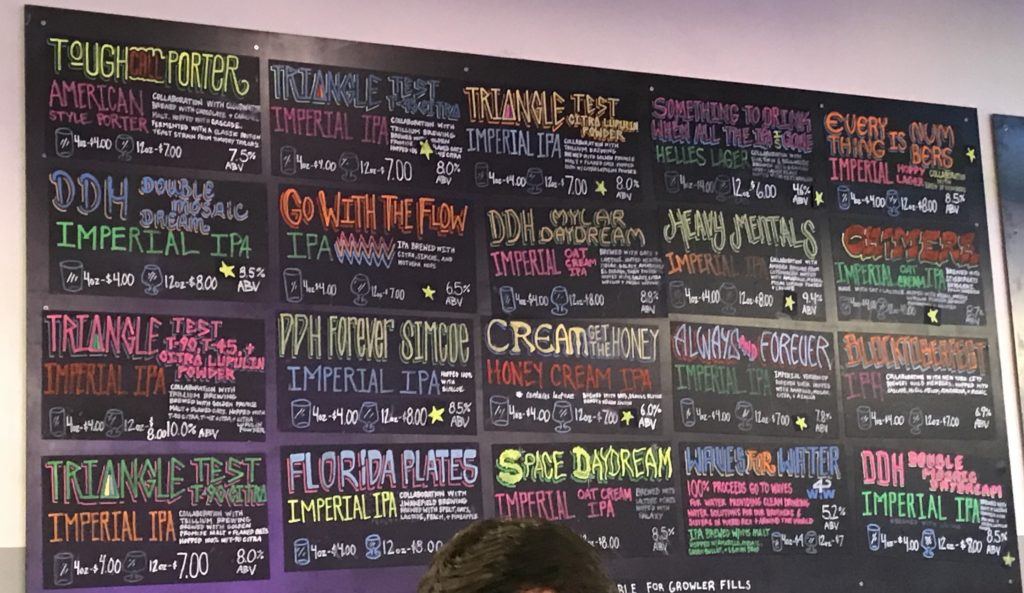
The text message response was, “Always & Forever sounds tasty, Go With the Flow, Triangle Test would all be our picks.”
We went with a 64oz growler of Always & Forever, and while it was filling, I had a taste of the 10% triangle test (YUM). And just to make sure I kept the same mojo going, I also completed this post from their taproom the following week, fueled by a Cream Get the Honey and one more Always & Forever, and the above playlist on the earbuds.
recipe
The Menu
Carnitas: the star of the show. Unless you are having a big dinner party, you will thankfully, and wonderfully, eat for several meals from this recipe. Our family, (including 2 kids) ate it for 5 meals, over 4 days, without complaint: 4 taco dinners, and one Huevos Rancheros twist for brunch. I wanted to try it in a ricebowl or quesadilla but after making our own corn tortillas, we couldn’t break away from that deliciousness.
The spicy salsa verde recipe is just our adaptation of what we found online. Our friend M has said she’d consider sharing her mom’s salsa verde recipe, but first I have to find a coveted, secret family recipe that she’s interested in so that we can trade! 😉
I think we might never buy tortillas again. Freshly made corn tortillas are TOO good, and very easy. The recipe and tips for a home-made tortilla press is below.
recipe
Carnitas
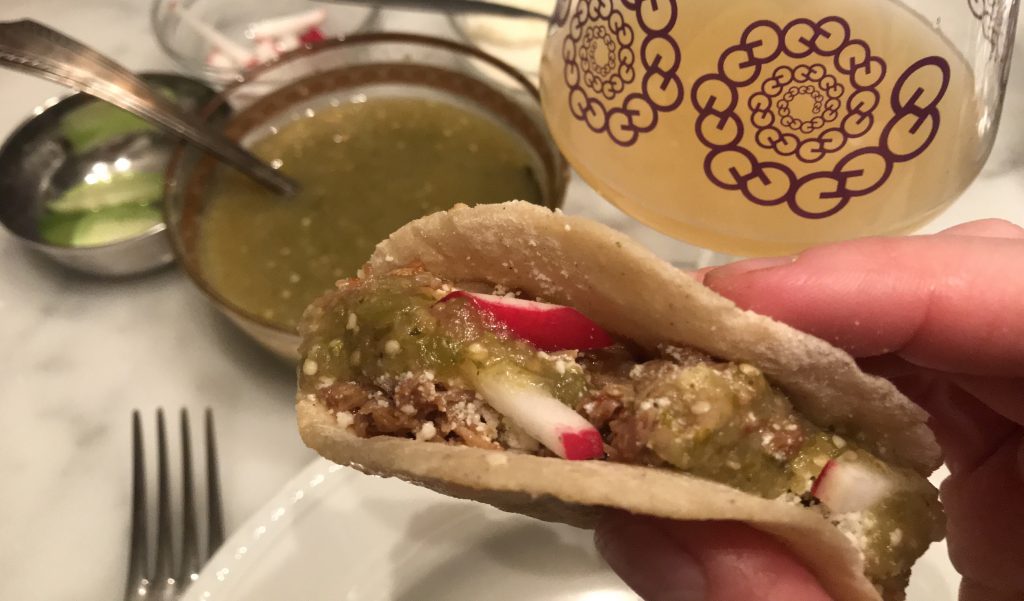
Carnitas
Equipment
- large baking dish
Ingredients
- 5 lbs boneless pork shoulder, cut into 4" chunks trimmed of excess fat
- 1-1 1/2 tbsp coarse sea salt
- 2 tbsp neutral vegetable oil
- 1 cup chicken broth or vegetable, in a pinch
- 1 cinnamon stick (3-4 inches)
- 3 tsp cumin powder (we love cumin so we tend to up this flavor)
- 1 1/2 tsp chile powder (some chile powders can be spicy, mine tends to be so I use less when it's just the kids and I)
- 1 1/2 tsp ancho chile powder
- 1 large bay leaf (or 2 smaller ones)
- 3-4 cloves of garlic, peeled and roughly sliced
- 1/4 of an orange (or 1/4 cup orange juice)
To Serve
- tortillas preferably homemade
- salsa verde preferably homemade
- finely sliced iceberg lettuce
- shredded cotija cheese
- radishes sliced into matchsticks
Instructions
Prepare the Chef!
- Press play on our "Carnitas, Cumbias & Craft Beer" Spotify playlist! A noted in the full post, music is an important ingredient and also aids in getting the chef in the correct emotional state, less any negative energies spoil the taste of the food.
- Pick your poison. Perhaps a “una tequilita,” (a shot of tequilla), some strong coffee, or craft beer, like Marisabel would have?
Prepare the Carnitas
- Chop to size, trim excess fat (if needed, but don't go crazy, as you want it to stay a bit moist) and generously salt each piece of pork.
- Preheat your oven to 350F/180C.
- Heat a heavy-bottomed cast iron skillet to medium high and add oil. Brown the pieces of pork in a single layer, turning them as little as possible. You want them to be nicely browned on each side. Cook in batches so that you don't crowd them in the pan / lower the temperature.
- When nicely browned, place pork pieces in a large baking dish tented with foil, ready to go into the preheated oven**. When all the pork has been browned, blot away any excess oil/fat in the skillet, deglaze the pan by pouring in a cup of broth in the hot pan and scraping it with a wooden spatula to release the delicious brown bits. Turn off the heat.
- To the roasting pan, add the cinnamon stick, chile powder, cumin, ancho, bay leaf, garlic and orange quarter into the pan. Add enough water to submerge them about 2/3 of the way.
- Braise (uncovered) in the oven for 3 hours. (You can also leave it on the stovetop and simmer, covered) for 3 hours if needed. Turn the pork a few times during coking until there's less than 1/2 cup of liquid. After about 3 hours, check your pork for tenderness/meat is falling apart (may be less depending on how small you cut your pork pieces) remove the pork from the pot onto a dish to cool.
- Don't discard the liquid in the pan; set aside.
- After pork has cooled, shred them into bite size pieces, discarding any big pieces of fat. I've used a couple forks before but my mom says your clean hands are the best and quickest tools in the kitchen for this job.
- Return the pork pieces back into the roasting pan and cook in the oven for a bit longer until the remaining liquid has evaporated (30min-1hr). This is by preference. Some recipes will say to evaporate until the pork is crispy and caramelized…but we like our carnitas partially caramelized- we leave just a trace of liquid.
- I find that if you turn the shredded pork minimally (maybe twice) then some of the top pieces become caramelized while the inside stays moist.
Serving
- If you're making tacos that night, I'd prep all the things you need for this while the shredded pork is finishing off. We love our tacos simple and flavorful (stovetop-heated corn tortillas, freshly made salsa verde, finely sliced iceberg lettuce, and shredded cotija cheese…sometimes finely diced radish).
Notes
recipe
Spicy Salsa Verde
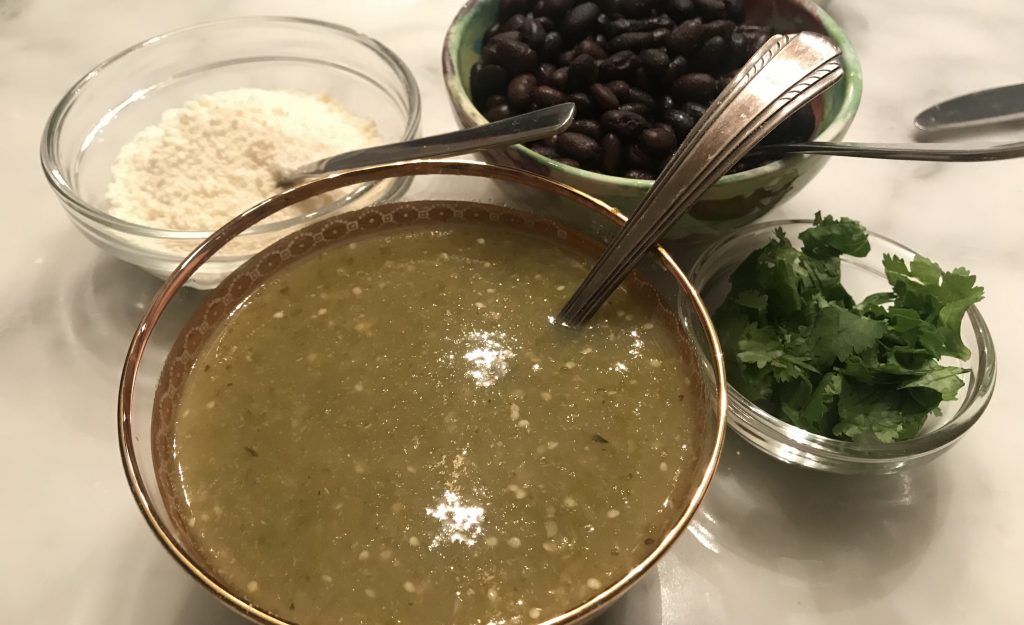
Spicy Salsa Verde
Ingredients
- 1 lb tomatillos, husked and chunked (or in a pinch, green tomatoes + 1.5 tbsp lime juice)
- 3/4 cup chopped onion
- 2-3 cloves of garlic, chopped
- 2 serrano chile peppers, chopped
- 1/3 cup fresh cilantro, chopped
- 1 tsp cumin
- 1 1/2 tsp salt
- 1.5 cups water
Instructions
- Wash & chop ingredients but don’t go to crazy dicing things because you’ll pulverize it later.
- Put everything in a pot and turn the burner to high, stirring occasionally. When it boils, reduce it to medium-low and simmer about 10 minutes until tomatillos are soft.
- Turn off the heat, and then using a immersion blender (or food processor or blender, per what you have at home), puree the deliciousness until smooth. It should be the consistency of a thick soup, so add water if needed, or cook it down in the next step if you accidentally added too much water!
- Cook for one additional minute on medium heat, to ensure flavors are melded.
- It makes a lot, so be prepared to freeze some in small containers to enjoy later, too.
recipe
Tortillas
It might seem like a lot of work, but its worth it. Even more fun if you recruit additional hands to assist!
The hardest part is finding the correct flour (Masa is corn flour treated with lime!). The hack “tortilla press” is just a heavy book covered with a ziploc bag. Helps the tortilla go from a ball, to a neat flat circle, instantly.
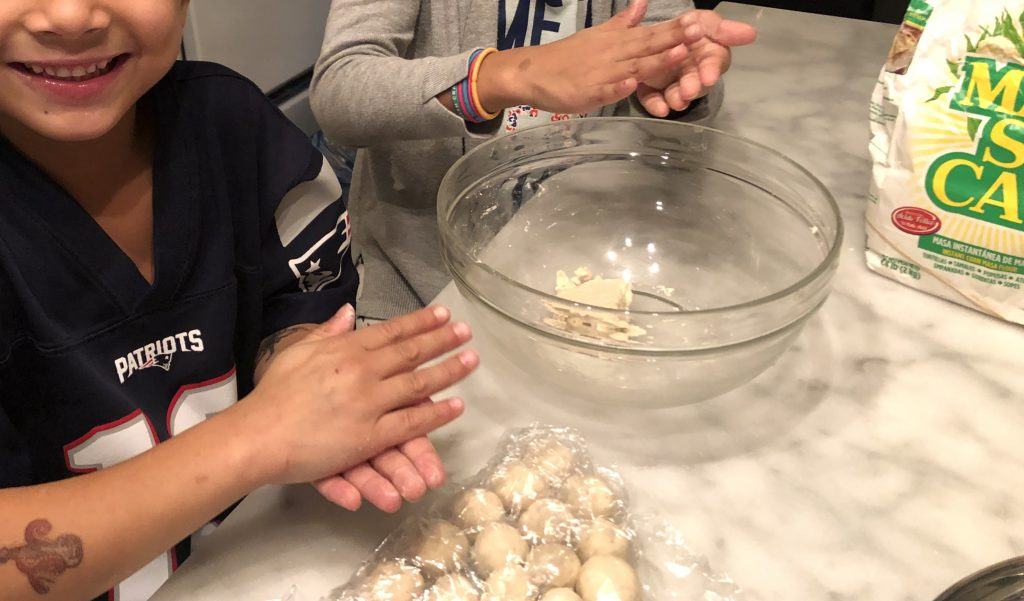

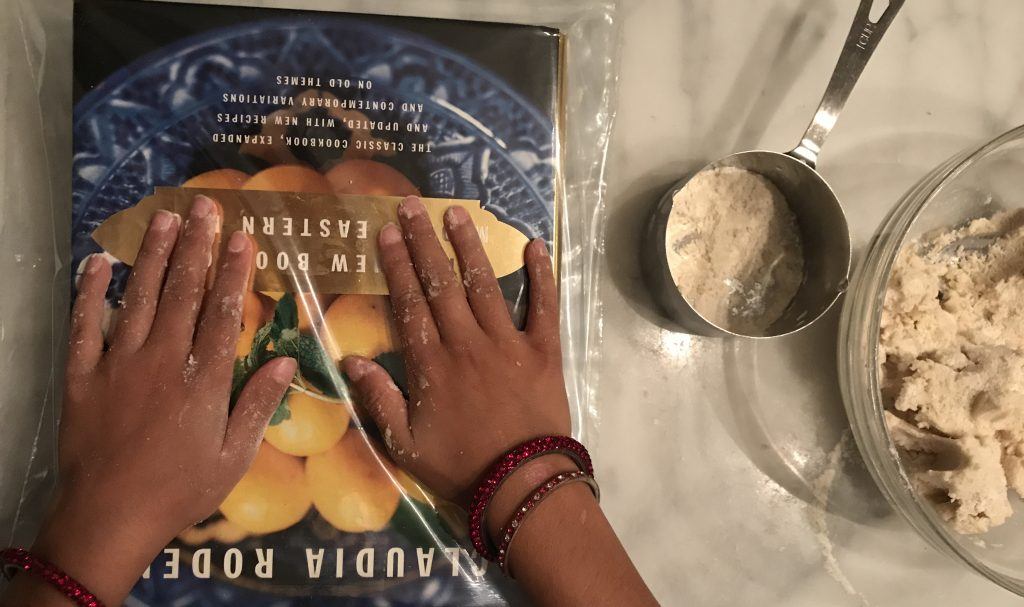
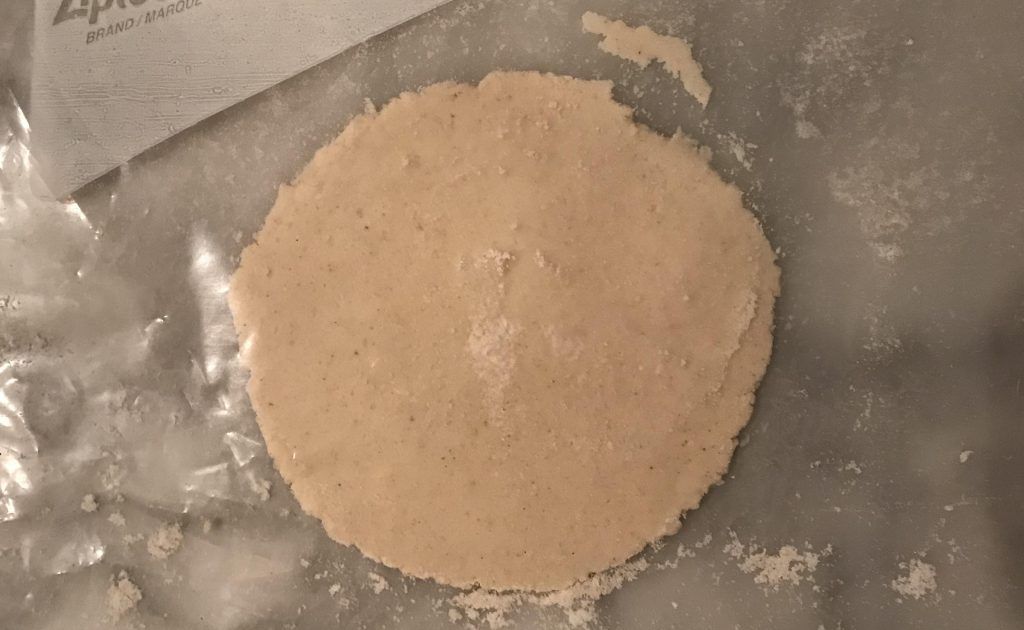
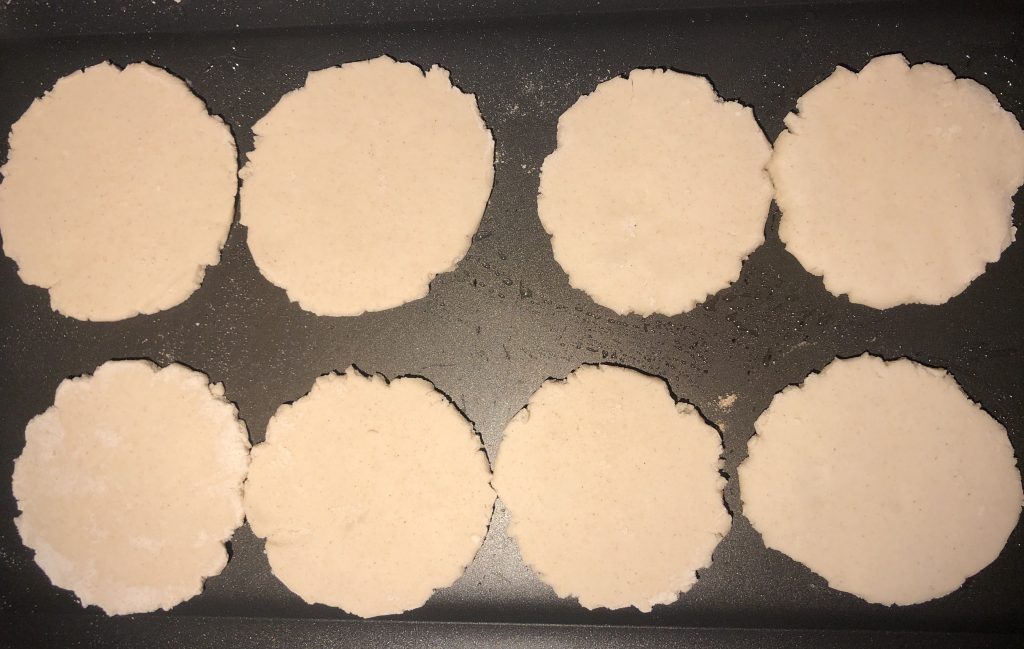
Tortillas
Ingredients
- 1 large, heavy book
- 2 1 gallon Ziploc bags
- 2 Masa (special lime-treated cornflower; there is no substitute)
- 1 cup water
- 1/2 tsp salt (more/less to taste)
Instructions
- First, make your MacGyver-ed "tortilla press."
- Get a large book that weighs a couple pounds and cover it with one of the Ziploc bags, taping it across the top to keep it closed. It doesn’t need to be hermetically sealed, but you will be holding it with floured hands, so def cover it.
- Cut the other Ziploc bag along its 2 sides, down to the bottom but NOT across the bottom. The bag will now sort of open like a book.
- Place the cut bag on a flat surface, and dust with Masa, ready to start pressing.
- Then make the tortillas.
- In a bowl, mix masa and water 1:1, along with salt to taste. Mixture should make a solid dough that holds its shape and is soft, but isn’t too sticky. If it’s too sticky, add more masa. If crumbling, add more water. Let it sit for at least 30 minutes.
- With masa-floured hands, roll the dough into golf-ball sized balls. Keeping them on the side of the bowl, or another plate, continuing to roll until dough is gone.
- Heat a non-stick pan, preferably a double-burner.
- Heat your toaster oven to 200 degrees and put an empty baking dish in it to get ready to keep tortillas warm (with cover or foil). Or just microwave a clean, dampened dishtowel for a minute and keep the tortillas there.
- In batches, place one ball inside the masa-dusted, cut Ziploc bag, and use the book to flatten it simply by lowering the large book down onto the ball evenly and pressing down. As is would be great, but if you prefer a thinner tortilla, while it’s still inside the cut bag, carefully use the edge of the large book to sort of pull the dough out further flattening it.
- Place it on an ungreased, hot pan and cook about a minute each side. If you like yours more browned, you may want to do 2 minutes each side.
- Repeat for all the dough and swear never to buy corn tortillas again.
Notes
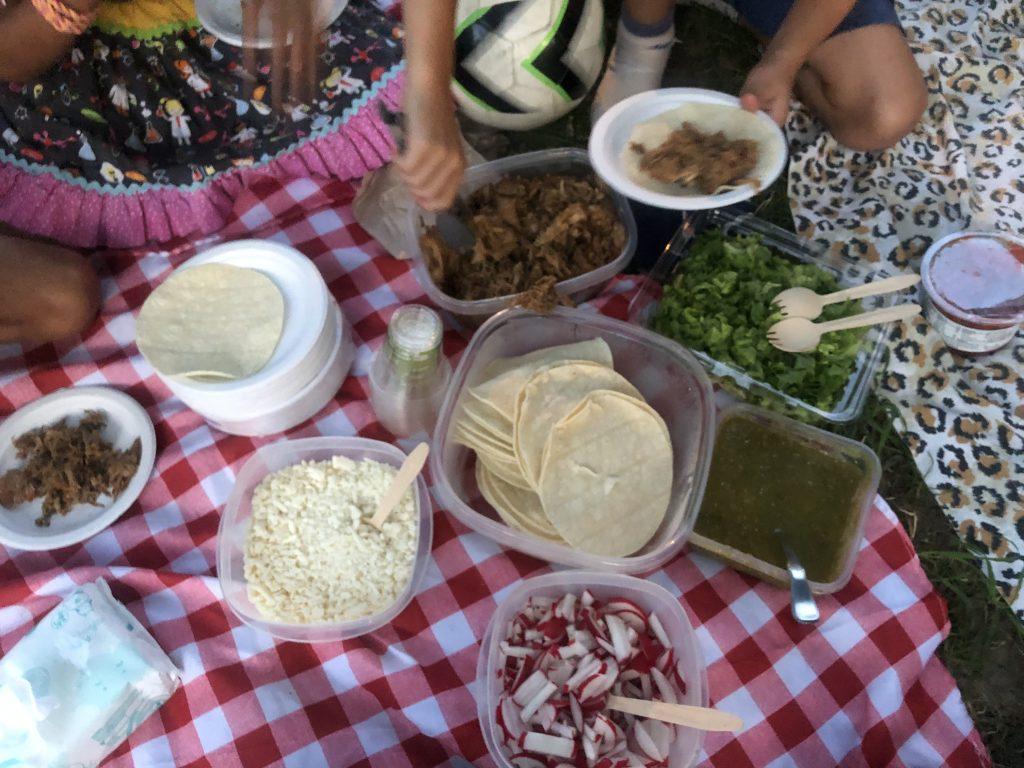
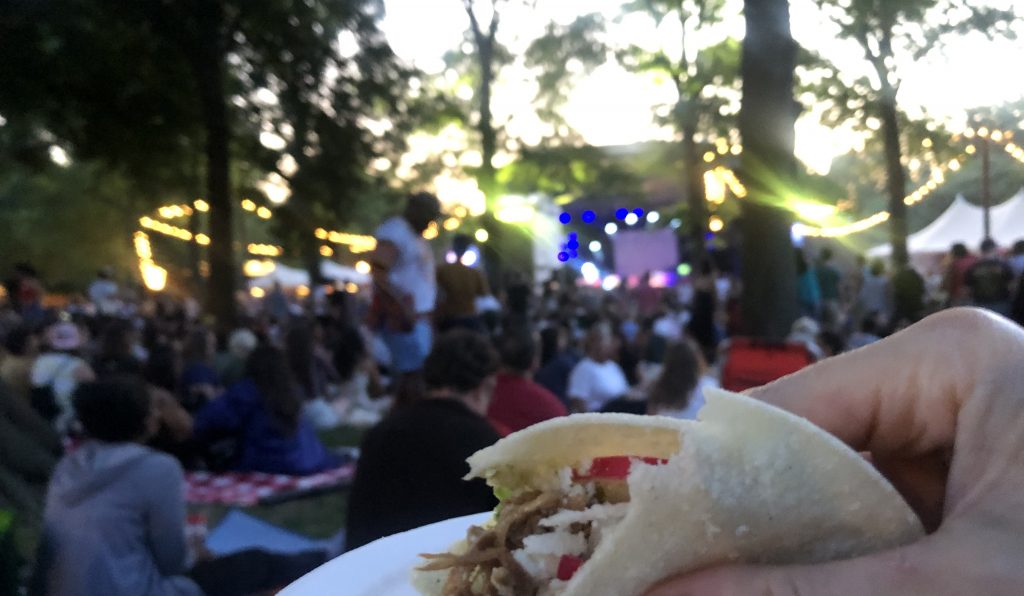
story
Provecho!
Though we never actually ate carnitas around the same table as M and her family, we feel their presence and memory every time we sit down to enjoy carnitas.
“Provecho!” we say, just as M. told us to, as we begin our meal.
Its essentially “bon appétit” in Spanish, but if you want to know more, there is a handy, detailed guide of when to say it (and when not to), here.